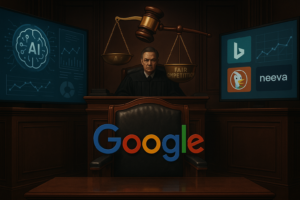Navigating AI Regulation: Balancing Innovation and Oversight in the Digital Age
As AI technologies continue to evolve rapidly, striking a balance between fostering innovation and implementing effective regulations becomes crucial. This article explores the complexities of AI regulation, highlighting the importance of nuanced policy frameworks that protect consumers while enabling technological advancement.
Artificial Intelligence (AI) has transformed numerous industries, from healthcare and finance to autonomous systems and cybersecurity. However, alongside its benefits, AI presents significant challenges, particularly in the realm of regulation and policy. Striking the right balance between encouraging innovation and ensuring adequate oversight is vital for harnessing AI’s potential while safeguarding public interests.
The Current Regulatory Landscape
AI regulation is a complex and evolving field. Countries worldwide are grappling with how best to regulate AI technologies, balancing the need for innovation with the necessity of oversight. The European Union has been at the forefront of AI regulation, proposing the Artificial Intelligence Act, which categorizes AI systems by risk level and imposes varying regulatory requirements. Similarly, the United States has seen discussions on establishing a federal AI framework, though progress has been slower.
The Need for Balanced AI Regulation
- Promoting Innovation: Overly stringent regulations can stifle innovation, deterring companies from investing in AI research and development. It’s crucial that regulatory frameworks do not hinder technological advancement but rather encourage responsible innovation.
- Protecting Consumer Privacy and Security: Data privacy and security are significant concerns in AI applications. Regulations must ensure that AI systems respect user privacy and safeguard sensitive information.
- Ensuring Fairness and Accountability: AI systems can inadvertently perpetuate biases present in their training data, leading to unfair outcomes. Regulatory measures should mandate transparency and accountability in AI algorithms to prevent discrimination.
- Addressing Ethical Concerns: AI raises ethical questions, from the use of autonomous weapons to decision-making in healthcare. Policymakers must consider the ethical implications of AI technologies and ensure they align with societal values.
Challenges in AI Regulation
- Rapid Technological Advancements: AI technologies evolve rapidly, often outpacing regulatory developments. Creating flexible, adaptable policies is essential to keep pace with technological advancements.
- Global Coordination: AI is a global phenomenon, and international cooperation is crucial for effective regulation. Policymakers must work together to establish standardized frameworks that transcend national borders.
- Balancing Innovation and Control: Striking the right balance between control and innovation is challenging. Policymakers must engage with industry experts, researchers, and the public to develop informed regulations.
The Role of Public and Private Sectors
Public and private sectors play pivotal roles in shaping AI regulation. Governments must establish clear guidelines and engage in dialogue with stakeholders to ensure regulations are practical and effective. Meanwhile, private companies should prioritize ethical AI development, incorporating fairness, transparency, and accountability into their systems.
Future Directions in AI Regulation
- Adaptive Regulatory Frameworks: Policymakers should adopt adaptive regulatory frameworks that can evolve alongside AI technologies, ensuring they remain relevant and effective.
- Focus on Education and Awareness: Raising awareness about AI’s potential and risks is crucial for informed policy-making. Education initiatives can help demystify AI and foster a knowledgeable public discourse.
- Encouraging Collaboration: Collaboration between governments, academia, industry, and civil society is vital for developing comprehensive AI regulations. Such partnerships can leverage diverse expertise to address complex challenges effectively.
Conclusion
As AI technologies continue to shape our world, establishing robust regulatory frameworks is imperative. Balancing innovation and oversight requires nuanced policies that protect consumers while fostering technological advancement. By addressing the ethical, privacy, and security concerns associated with AI, policymakers can ensure AI serves as a force for good, benefiting society as a whole. The future of AI regulation lies in collaboration, adaptability, and a commitment to ethical principles, paving the way for a responsible and innovative digital age.


